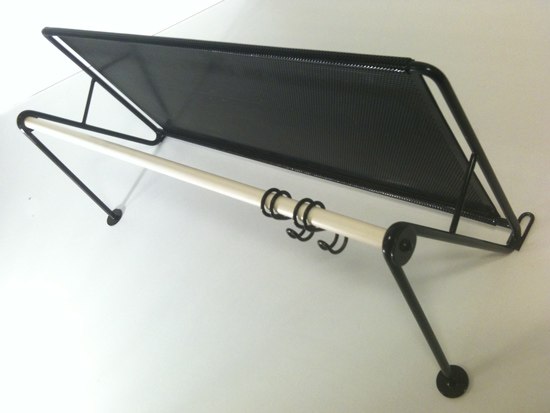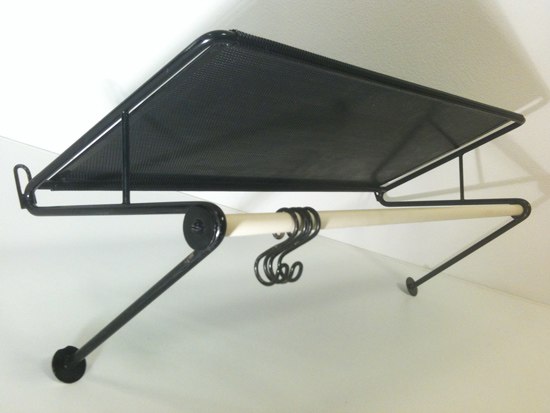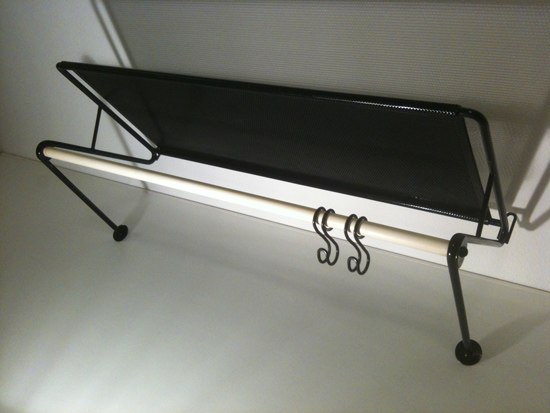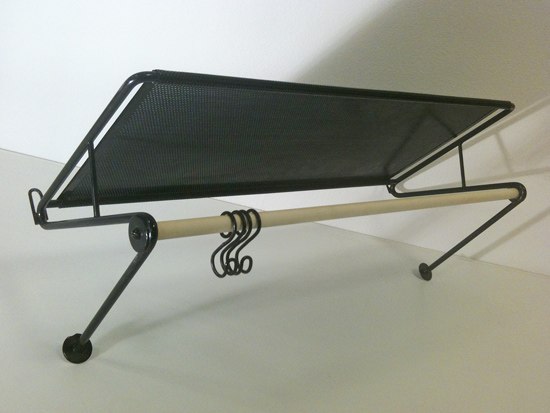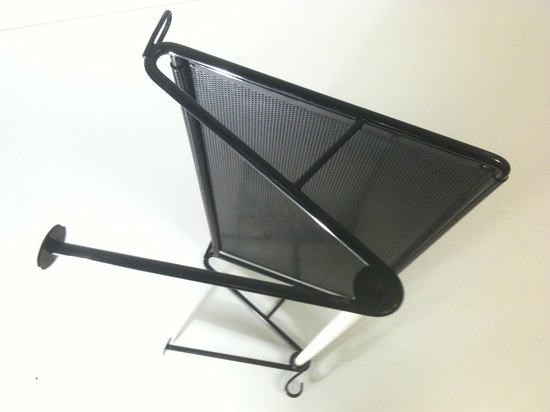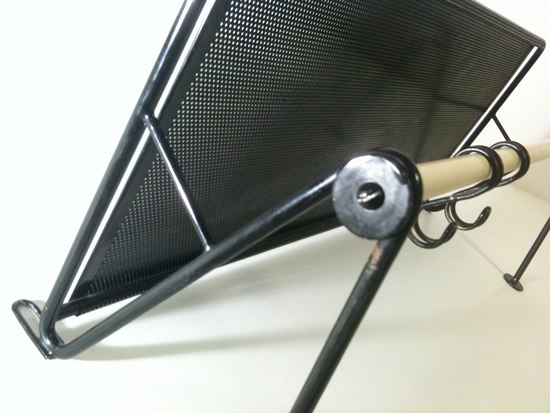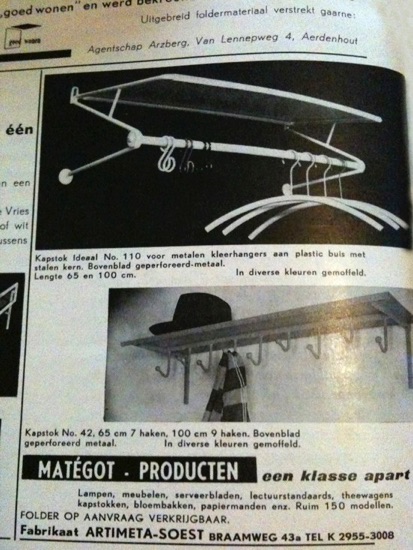• manufacturer/type:
Artimeta Soest, No.110
• designer, year:
F.H. Fiedldij & Mathieu Mategot, ±1955
• material:
white painted frame with black perforated metal top
• measurements:
18cm high, 80cm width, 30cm deep
• condition:
Beautiful original condition, with very minor usermarks consisting with age. Nice vintage.
• background:
Iconic piece of modernistic fifties design from Holland. Artimeta is very well known for its products designed by
world famous industrial designer Mathieu Mategot.
In the fifties this coat rack was promoted in magazines like ’Goed Wonen’, amongst other designs, as a ‘Mategot’ product.
A catalogue is known which states F.H. Fiedeldij as designer.
• literature:
shown in different ‘Goed Wonen’ (Good living) magazines.
sold CONTACT




